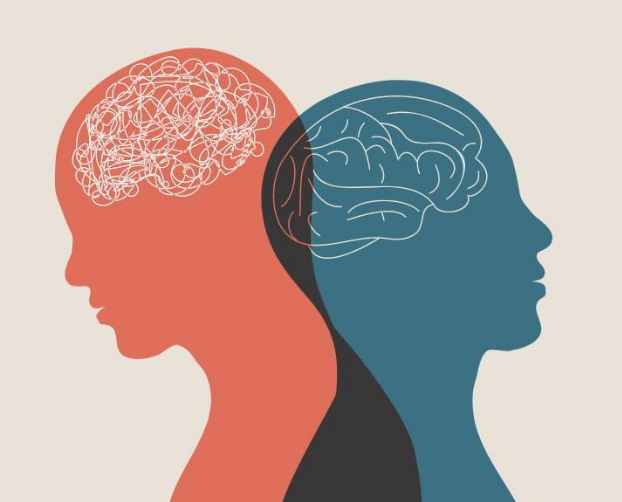I. Introduction
Sigmund Freud and the Neo-Freudians have made valuable contributions to the field of psychology. While they share some common ground, there are fundamental differences between Freud’s original theories and the perspectives of the Neo-Freudians.
Keep reading as we discuss the main differences between Sigmund Freud and the Neo-Freudians, shedding light on their varying theoretical approaches and applications.
II. Differences in Theory
A. Freud’s Emphasis on the Unconscious
Sigmund Freud, often credited with developing the first comprehensive theory of personality with his psychoanalytic theory, placed a strong emphasis on the unconscious mind.
He believed that unconscious desires, memories, and experiences influenced human behavior, and his approach revolved around bringing these unconscious elements to conscious awareness.
Freud proposed that the unconscious mind contained repressed thoughts and memories, which he argued could be accessed through techniques such as dream analysis and free association.
B. Neo-Freudians’ Holistic Approach to Psychology
The Neo-Freudians, on the other hand, took a more holistic approach to psychology. They expanded on Freud’s theories by incorporating social and cultural factors into their analyses.
Neo-Freudians believed that personality development was influenced not only by unconscious desires but also by interpersonal relationships and societal influences. They emphasized the importance of social dynamics and the individual’s interaction with their environment.
C. Expansion of Psychoanalytic Theory
While Freud laid the foundation for psychoanalytic theory, the Neo-Freudians further developed and expanded upon his ideas. They introduced new concepts and theories to complement and refine Freud’s work.
For instance, Carl Jung extended the concept of the unconscious to include the collective unconscious, which encompasses universal archetypes and symbols shared by all individuals. Similarly, Alfred Adler focused on the importance of striving for superiority and the impact of social interest on psychological well-being.
III. Differences in Application
A. Role of the Analyst
Freud believed that the analyst should adopt a neutral and distant stance in the therapeutic process, acting as a blank slate onto which the patient projected their thoughts and feelings. This technique, known as transference, aimed to reveal unconscious conflicts.
In contrast, the Neo-Freudians emphasized a more collaborative and interactive approach between the analyst and the patient. They believed that the therapist’s genuine empathy and active involvement in the therapeutic relationship were crucial for facilitating the client’s growth and self-awareness.
B. Use of Language
Freud placed great importance on the use of language as a means of uncovering unconscious thoughts and desires. He developed psychoanalytic techniques such as free association, where patients would freely express their thoughts without censorship.
In contrast, the Neo-Freudians expanded beyond verbal communication and recognized the significance of nonverbal cues and expressions. They considered body language, facial expressions, and other nonverbal forms of communication as valuable sources of insight into the individual’s psyche.
C. Emphasis on Therapy
Freud’s primary focus was on psychoanalysis, a form of therapy that aimed to uncover unconscious conflicts and resolve them through interpretation and insight. Neo-Freudians, while acknowledging the value of psychoanalysis, also introduced alternative therapeutic approaches.
They emphasized the importance of interpersonal relationships and the role of the individual’s social context in the process of psychological healing. Neo-Freudian therapies often incorporated group therapy, family therapy, and other interpersonal interventions.
IV. Examples of Neo-Freudian Schools of Thought
A. Object Relations Theory
Object relations theory explores how individuals develop and maintain relationships with others based on their early experiences and interactions with significant figures, particularly caregivers.
It emphasizes the impact of these early relationships on one’s sense of self and subsequent patterns of relating to others. It suggests that our internal representations, or “objects,” of these early attachment figures influence our perception, expectations, and behaviors in later relationships.
B. Ego Psychology
Ego Psychology focuses on understanding and studying the role of the ego, or the conscious mind, in human behavior and development. It emerged as an extension of Sigmund Freud’s psychoanalytic theory, placing particular emphasis on the ego’s adaptive functions and its interaction with the external world.
C. Self-Psychology
Self-Psychology emphasizes the significance of the self and self-esteem in psychological development. It explores the individual’s need for validation, empathy, and mirroring from others, particularly during early developmental stages.
Self-Psychology highlights the role of self-objects, i.e., people or experiences that help shape and reinforce the individual’s sense of self.
V. Conclusion
A. Summary of the Major Differences between Sigmund Freud and the Neo-Freudians
The main difference between Sigmund Freud and the Neo-Freudians lies in their theoretical perspectives and applications. Freud focused on the unconscious mind and individual conflicts, while the Neo-Freudians adopted a more holistic approach, considering social and cultural factors.
They expanded on Freud’s theories, introducing concepts such as the collective unconscious, interpersonal relationships, and the importance of the self. The Neo-Freudians also brought about changes in therapeutic practices, emphasizing collaboration, nonverbal communication, and the role of social context.
B. Impact of the Neo-Freudians on Contemporary Psychology
The Neo-Freudian’s broader perspective and incorporation of social and cultural influences have enriched the understanding of human behavior and mental processes. Their school of thought provided alternative frameworks for examining personality development, interpersonal dynamics, and therapeutic approaches.
Their emphasis on the importance of the self, relationships, and social context has influenced various branches of psychology, including psychotherapy, counseling, and developmental psychology.









